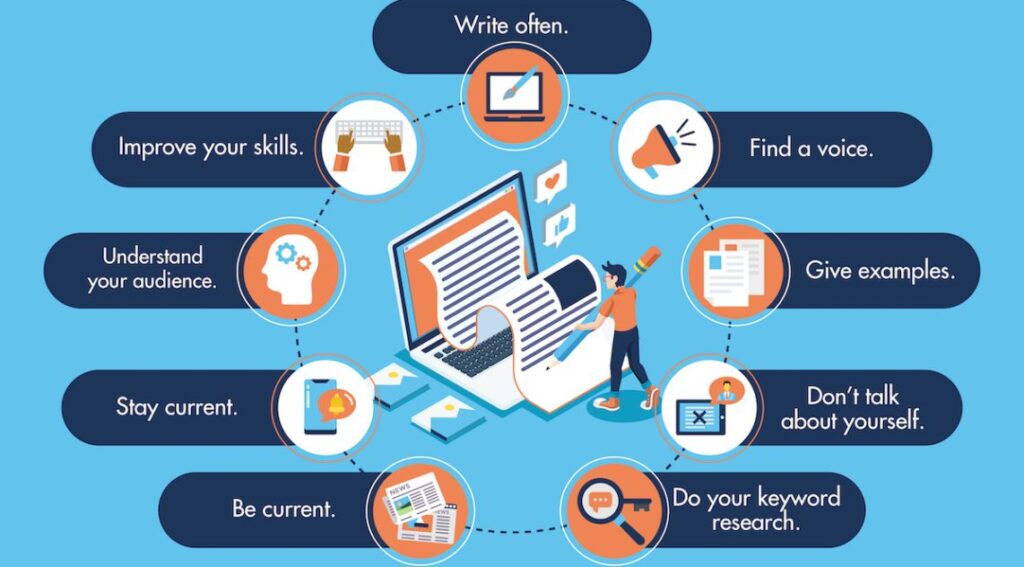What Is A Digital Creator? Things To Know
The year is 2022, and the internet has allowed for an exponential increase in global connectivity. With a new generation of digital creators riding the waves of business digitalization, new jobs are being created left, right, and center.
Being a creator is a fantastic way to launch an online business if you have a skill that you want to share with more people. Nevertheless, what precisely is a digital creator? And how do you become one? We’ll cover every aspect of a digital creator in this article. Please keep reading.
An Explanation Of A Digital Creator
Those who produce content for various digital platforms are known as digital creators. The platforms can be YouTube, TikTok, Instagram, Twitter, a website, or any other digital space, and the content can be in the form of videos, pictures, graphics, blog posts, or other types of media.
Digital creators, also known as content producers, create content with the intention of engaging an audience. TV show reviews, how-to videos, and day-in-the-life vlogs are just a few examples of engaging content formats. But regardless of how their content appears, digital creators are ultimately responsible for creating high-quality, compelling content.
Digital creators and influencers are distinct even though they sometimes overlap. Social media users known as influencers create content with the intention of persuading their followers to act or make a purchase.
The influencer typically gets paid in cash or another form of compensation from the sale. Digital creators can influence their audience, but that isn’t the intent of their content. The goal is to inform, amuse, and engage viewers.
What Is A Digital Creator’s Job?
A digital creator, as was already mentioned, produces digital content, as the name suggests. Digital content producers, however, also cultivate a following for their work, in contrast to traditional content producers.
Here are some of the things a digital creator may do:
- Create written content: blogs, copywriting, etc
- Create video content: Youtube, social media videos, etc
- Create visual content: Graphic design
- Share their creations such as digital products with their audience on social media platforms or through other channels like email newsletters or websites
- Build an engaged community around their work by interacting with fans on social media and making them feel like they’re part of something special
- Work closely with other brands as a means to monetize the content
Who Can Become A Digital Creator?
Anyone who has extensive knowledge in a field that can be taught to others can create digital content, as we stated at the beginning of this post.
For instance, if you’re a teacher, developing online courses will help you reach more students.
Digital influencer can share their knowledge of brand partnerships in the form of an ebook or use their skills to attract followers.
A YouTuber who is already skilled at recording videos can design courses that cover everything from how to record without being shy to how to edit videos.
A tailor who is an expert in clothing construction can develop materials that instruct readers on how to make simple adjustments to their clothes.
A biometric access control business can create specialized content in the meantime to establish itself as a leader in its industry. As you can see, there are countless options. Consider the activity you engage in that those in your immediate vicinity frequently request instruction in.
How To Be A Digital Creator?
Although there is no one way to start out as a digital creator, by following the advice provided below, you can position yourself for success.

Find Your Niche
For a few reasons, you must have a distinct niche. Since your audience won’t know what kind of content to anticipate from you, it will be difficult to build a loyal following if your content is too diverse.
Second, sticking to a narrow niche will help you maintain consistency and focus. Going back to your niche will help you remember why you started creating content in the first place if you run into a mental block and are unsure how to proceed.
Gather The Materials You Need
It’s time to gather the tools you’ll need, such as a mic, camera, and lighting, once you’ve decided what kind of content you want to create. Just keep in mind that you don’t need to spend a lot of money on expensive supplies to get started, especially if you’re new to content creation.
Create
It’s time to get creative now that you are aware of your niche, understand the type of content you want to produce, and have the necessary tools. If your content isn’t perfect at first, don’t give up. The best way to improve is to continue doing it.
Keep a record of your creative process and note what works and what doesn’t. If you want more natural lighting for a longer period of time, you might find that filming earlier in the day is preferable to filming later in the day. Whether you’re blogging, recording a podcast, or posting to YouTube, always review your previous work to improve moving forward.
Set Smart Goals
Setting goals is among the most effective ways to develop as a digital creator. For instance, as a podcaster, your objective might be to gain 30% more listeners over the coming year. You should set SMART goals in order to keep yourself on track and to help you set appropriate goals.
SMART goals are:
- precise, unambiguous, and well-defined
- numbers-based, quantifiable, and trackable, as in the case of the podcaster.
- Obtainable, which necessitates being frank about your productivity levels.
- In line with your overall goal, realistic, and pertinent
- timely and includes a deadline for achieving the goal.
SMART goals are more likely to be achieved because they provide a roadmap for achieving your ultimate goal as a content creator, whatever that may be for you.
Get Organized And On A Consistent Schedule
Establishing a regular schedule will help you keep your audience interested because they will know to expect high-quality content from you on a regular basis. Take into account techniques like recording content in batches and spreading it out over time.
You could, for instance, schedule five TikTok videos to be posted individually over the course of the following week after recording them all in one day over the weekend.
There are apps and digital tools that can help you stay on track, although some digital creators manage their organization just fine with paper planners and calendars. Notion is a tool that’s well-liked by digital creators; it’s an app that lets you write, plan, organize your content, and schedule deadlines all in one location.
Be Active On Social Media
Whatever type of digital creator you are, you need to be active on social media to reach the widest audience possible. Simply responding to comments under your social media posts can count as being active.
To increase engagement and interact with your followers on social media, you should also make graphics, videos, polls, and other original posts. For instance, you could upload brief excerpts from your YouTube videos to Instagram Reels or TikTok. To advertise a special guest, you can also produce video content for your podcasts.
Take Advantage Of Monetization Opportunities
For creators who reach a certain level of engagement and followership on platforms like YouTube, TikTok, Pinterest, Twitch, and Instagram, there are paid opportunities available. Follow your progress on these apps to determine whether you are eligible or on the verge of being eligible. Brand collaborations, sponsorships, and other revenue streams are available to creators as well.

Create a press kit with details about your content, follower count, social media, and engagement if brands aren’t approaching you naturally, and start contacting them directly if they don’t.
Everyone has a different path toward producing digital content, but if you follow the advice above to get going, you’ll find it easier to travel that path. With the right preparation and goal-setting, you’ll be able to identify the type of digital creator you want to be and how you can develop over time.
What Abilities Do Successful Digital Creators Possess?
Have Impeccable Research Skills
A successful digital creator must conduct research. It’s not enough to have a thorough understanding of the subjects you want to write about; you also need to know who your audience is and what their needs, interests, and expectations are.
As a digital creator, you should also research your competition. For example, how many other people are already producing content in this industry? How is the content that they create produced?
How frequently do they release fresh content? How many social media followers do they have? What formats do they employ (e.g., podcasts, Instagram stories, or YouTube videos)? What distinguishes your writing from theirs, specifically?
Familiarity With Seo
Getting your content ready for search engines is known as search engine optimization (SEO). The ability to be found is crucial for digital creators because it increases the number of people who will visit your website, interact with your content, and ultimately purchase your goods or services.
Gaining writing skills is helpful, but you can also use SEO tools to improve your content. For example, BuzzSumo can show you what kinds of content your audience is sharing across platforms, while AnswerThePublic can help you answer frequently asked questions on Google and create content about them.
The fundamentals of SEO must be understood by digital content producers in order for them to effectively use it in their work. Every digital creator needs to be able to optimize content for video SEO and imagery, not just copywriters.
You can also generate fresh content ideas that you might not have otherwise had by conducting keyword research to understand what the audience is searching for.
Studying Target Audience
Discovering your target audience is among the most crucial things you can do. You should be aware of your audience’s characteristics, interests, and motivations in addition to who they are and what they like.
Basic demographic information, such as age, interests, education, location, and purchasing patterns, can be very helpful in helping you to come up with the kind of ideas you need.
You’ll have a better understanding of how your brand or product can address those issues for your target market if you can identify their pain points.
Your first duty as a content creator is to determine what your audience enjoys, finds intriguing, or finds useful. Use these concepts to guide your digital content strategy.
Identifying The Brand’s Strengths And Weaknesses
Brand analysis is a discovery process. You need to know what constitutes a brand and how to build one from scratch if you want to succeed as a digital creator.
You’ll also need to understand brand marketing and success metrics for your own business.
The first step in becoming a successful digital creator is developing brand awareness. You need to educate yourself on the various types of brands before you can analyze or build one for yourself. The most common types of brands are:
- Product-based: This type of brand focuses on the physical product itself instead of its branding or marketing strategy
- Service-based: This type of brand focuses on providing services rather than products
- Experiential/Emotional: By relating to customers through experiences rather than just advertising messages, this type of brand heavily relies on emotion.
Consistency
For digital artists, consistency is essential. It’s also a key element in maintaining audience interest and engagement; if you stop providing them with content, they might start to look elsewhere.
Furthermore, people will lose interest quickly if your content shifts from being of high quality to being of low quality or from being informative to being less informative.
In the creation of digital content, commitment and consistency are essential. As the saying goes, “Out of sight, out of mind”, so make sure your message gets seen.
Productivity apps can make your life easier by helping you manage tasks and store files. Some example apps or tools you can use include:
- With the help of the straightforward task manager app Todoist, you can keep track of and organize tasks by projects. By sharing and tagging tasks, you can also work together with others.
- For sharing documents and working together in real time, Google Docs is a fantastic tool. You won’t need to send and save files back and forth while writing and editing content thanks to this online word processor.
- For maximum efficiency, you can store all of your work in one location with ClickUp, an all-in-one tool. You can set goals to track your progress while also creating tasks, projects, and direct document building.
Have Basic Video Editing Or Graphic Creation Skills

The creation of visual components like logos, illustrations, and other images is referred to as graphic design. Digital content producers frequently use graphic design expertise to produce social media posts, websites, and other marketing materials.
The creation of vector-based artwork that can be scaled without sacrificing quality can be done by a digital content creator using programs like Adobe Illustrator.
Video editing skills are also necessary for copywriting, videography, and design. You will keep clients happy and work coming your way if you can streamline your work, find errors and typos, and produce polished deliverables.
Being Open To Feedback
Negative criticism shouldn’t be disregarded by digital creators. Don’t get offended if someone doesn’t like your video or your post. Take a deep breath and look for the issue so you can fix it!
Additionally, try to avoid taking criticism personally. Don’t take it personally if someone doesn’t like something you’ve done because negative feedback is not about you; it’s about the content itself.
Working as a digital creator can be rewarding and difficult at the same time. Curating content and making it widely available are two distinct processes, but using a content strategy to achieve success is a third.
To master this domain, remember the “Cs”: customer, creativity, and consistency.
What Kinds Of Digital Goods Are You Able To Produce?
Two different kinds of digital content are available for sale; we’ll cover each briefly below.
Downloadable Files
Any computer file that can be downloaded from the internet and used later falls under the category of digital content. Among the most common types produced by digital creators are:
- E-books in PDF or EPUB format;
- Miscellaneous documents (.doc, .rtf);
- Audiobooks and music (mp3, WMA);
- Video lessons;
- Talks and screencasts (MPEG, FLV, MOV, WMV);
- Software (.exe,.msi);
- Images and infographics;
- Scripts.
Subscriptions To Membership Websites
Membership websites also referred to as subscription clubs, are business models where creators sell their goods on a recurring basis. To ensure that customers who purchase your product have access to all the content you make available, you simply charge a subscription fee.
For this business model, you can offer the following:
- Private clubs;
- Websites with content restricted to members;
- Coaching clubs.
In order to spend more time on content creation, creators of this kind of product may choose to integrate a DE platform with their website’s registration system. All the other procedures, including automatically releasing or blocking registrations, collecting payments, and hosting the course, will be handled by the platform.
How Much Money Does A Digital Creator Make?
As a digital creator, there are many different ways to earn money. You can make money by selling your own goods, working with brands on sponsored content, or even getting paid when people buy things through your affiliate link.
Digital content creators must have knowledge of their audience on a fundamental level as well as expertise in digital marketing in order to successfully monetize their work. According to reports, the average US salary for digital creators is between $68,000 and $101,400. The industry is extremely profitable and expanding yearly.


